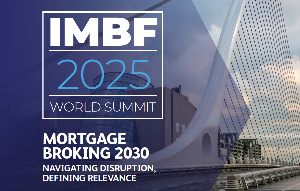
To determine the rent, research prices for comparable properties in the neighbourhood to get a baseline.
Then consider other factors like location, amenities offered, house/unit condition, and rental agreement.
When inflation is high, rental markets can vary wildly. It's especially important to track micro-trends in your specific location – not just nationally. This helps you determine what is fair, but not so high that it will turn renters away.
Trade Me has good figures on rents being asked in each New Zealand region, Barfoot & Thompson provides a quarterly report on Auckland rents and Stats NZ also has monthly updated rental index.
Inflation can feel like an invading army. It attacks on all sides.
According to Stats NZ inflation is the highest it has been since the 1990s. With the housing market front and centre in these discussions, renters and residential landlords are feeling the crunch.
It’s easy to feel flustered or unsure of how to keep up with unpredictable economic fluctuations. As the cost of almost everything rises, it can be hard to determine fair market rent for a property.
Landlords want to put the rent at a level that covers their expenses, but with thousands of extra dollars in tax to pay every year with the Government’s removal of mortgage interest payments as an expense against income, this is nearly impossible for a lot of landlords with one or two rentals.
The latest Bond Centre statistics show rents in some areas across the country appear to be dropping.
The median rent for a one-bedroom Auckland CBD apartment dropped by $30 a week from $430 in January to $400 in February. For a two-bedroom apartment, the median rent also dropped $30 a week from $560 to $530.
The national median rent in February was $560 a week, down from $575 a week in January, but up by $10 week from February last year.
While rents might be dropping slightly, landlords need to remember setting them too low will under achieve in terms of the property’s ROI; setting them too high means there is a risk of pricing the property out of the market and enduring expensive vacancies.
The following tips can help landlords set a well-positioned rental rate in a high inflation environment.
Top three tips
In times of economic volatility and inflation, it’s easy to get caught up in the frenzy of rising costs and anxiety over narrowing margins. However, it’s important to remember that pricing a rental requires a disciplined process, regardless of any inflation trends.
A landlord still wants to set a fair market rent, a rental rate that reflects market trends, while still being appealing to the renter.
Sticking to the following fundamentals could help you stay grounded–no matter what the economic situation is.
1. Get the correct comparables
Inflation may change prices, but it shouldn’t change a landlord’s approach to setting the rental rate. Regardless of market changes, there are some basic principles you should always include when determining how much to charge for rent.
To arrive at a good rental price, a landlord nees to figure out the “comps” in their specific neighbourhood or adjacent localities. Basically, what are other properties that are similar to yours being price at for rent
Checking rental listing sites for comps will give you a better idea of where other landlords set the monthly rent for similar properties. No property will ever be a perfect pure-play comparable, so you’ll need to adjust your rental price off the baseline rents and consider how your rental is better or less favourable to the comps available.
Some of these considerations include:
Location: Is your rental unit in a prime downtown location; on a nice suburban street; next door to power pylons. The desirability of the location, walking-distance to services, and neighbourhood all play a part on where you set the rental rate.
All the perks and extras, such as a swimming pool, gym, etc that your renters get from living in your property should be reflected in the rental price.
Is your rental unit brand-spanking new or could it use more than a little love? Properties that are better maintained typically rent for higher. Be honest about the condition of your place and make sure the asking rate reflects the condition.
2. Monitor trends in your local market
When setting the rental rate, it’s essential to consider the economic situation in your own neighbourhood, not just national averages.
Although prices in many areas have plateaued, some are still increasing.
You must take these local trends into consideration when setting your rental rate. This is especially important when inflation is high or if you manage multiple units that open up on an ongoing basis.
3. Don’t price yourself out
Exploding markets and opportunities to raise the rent might make you eager to bump up your rates, too. However, the situation isn't the same everywhere. Plus, runaway markets don’t always last forever.
While rental costs grew in several markets over the past year, many experts say the housing market is stabilising overall.
To make money, you need to find quality tenants and prevent vacancies. If you crank up the rent too far above market average at renewal time, it’s possible that your tenants will leave. If the rate is too high, you are less likely to find any new tenants who are willing to pay your over-market prices. Then, you’ll be dealing with an empty rental unit that is not producing any income. The takeaway is that when you are setting fair market rent, it’s important to pay attention to micro trends to find a good balance of income and a rental rate that tenants are willing to pay.
Other considerations in high inflation market
Periods of high inflation don’t just impact how you set your rental rate. Increasing prices and financial strain can bring other unexpected changes to your property business. In addition to knowing how to set the rent, here are some other considerations for landlords when inflation is high.
Track rising expenses
Inflation raises costs on all kinds of goods and services. From construction materials and tools, to professional service fees and insurance premiums, rising costs put pressure on your bottom line.
In times of high inflation, it’s good to take a good, hard look at your books. Make a list of all of your rental expenses and track how the prices for line items like the following have changed:
Maintenance
Contractors
Materials, such as flooring and appliances
Landscaping
Professional services like accountants and lawyers
Subscription-based software for administration
Insurance premiums
Stick to your rental agreement
If you decide to raise the rent on current tenants, stick to the terms of your rental agreement. As the rental agreement is set for a specific period of time, you usually have to wait until the end of the rental period before making changes to rental rates. This is typically the case even if you’re losing money through inflation.
If you try to raise the rent in a way that violates your rental agreement, your tenants may be able to take action at the Tenancy Tribunal.
Negotiating price increases with existing tenants
When it comes time to negotiate a lease renewal, you may be hesitant to raise the rent and face the risk losing good tenants. But there are effective ways to negotiate the lease at renewal time. If you know that you will raise the rent, give your existing tenants plenty of advanced notice. Explain your reasoning. No one likes their living expenses jumping up suddenly. However, having an open, respectful conversation can make the news easier to swallow.
If they’re great tenants, consider leaving room for negotiating a new rental rate. Finding new tenants can be expensive and risky. If your existing tenants offer to pay less than you want, it still might be better than finding someone new. Afterall, having wonderful tenants who respect your property, follow the rules, and pay on time every month could be worth settling on a little less than expected.



